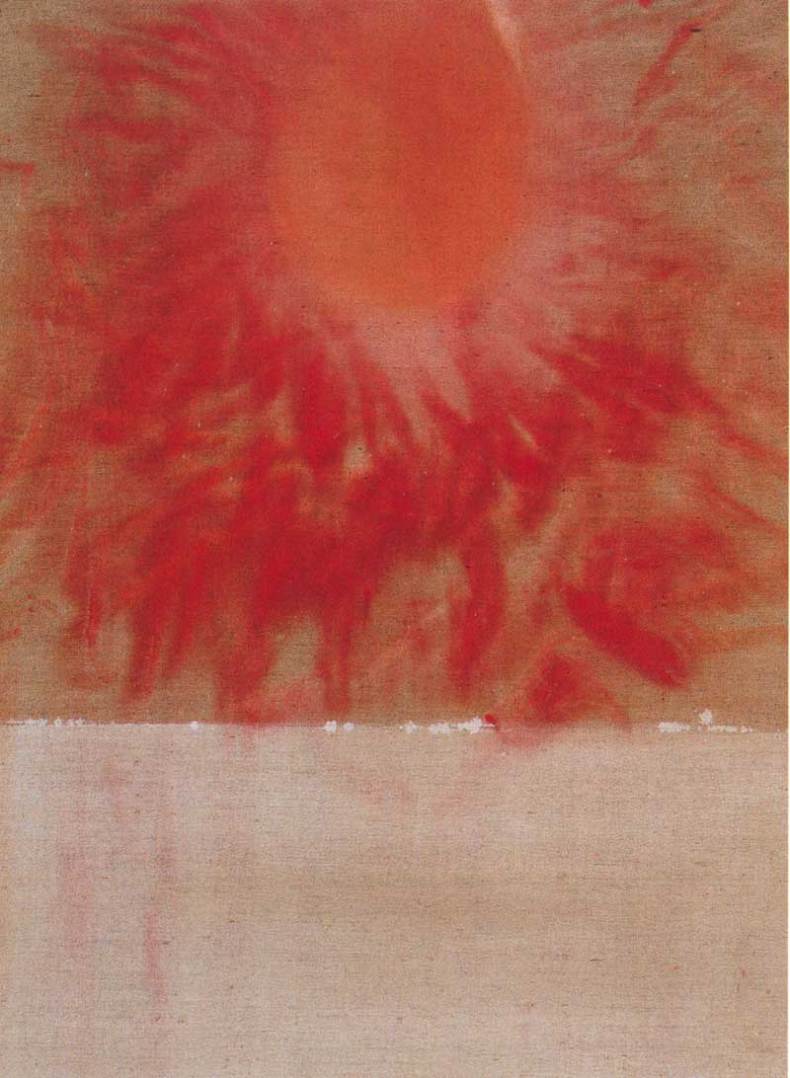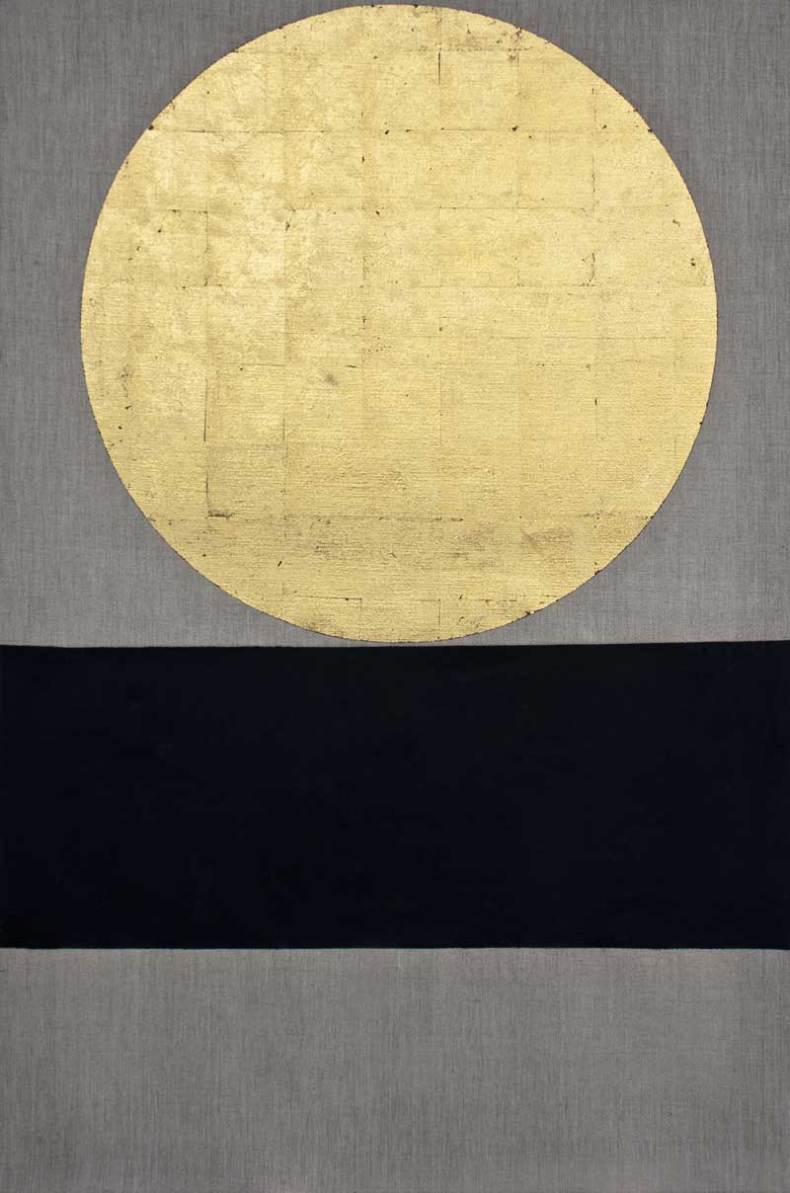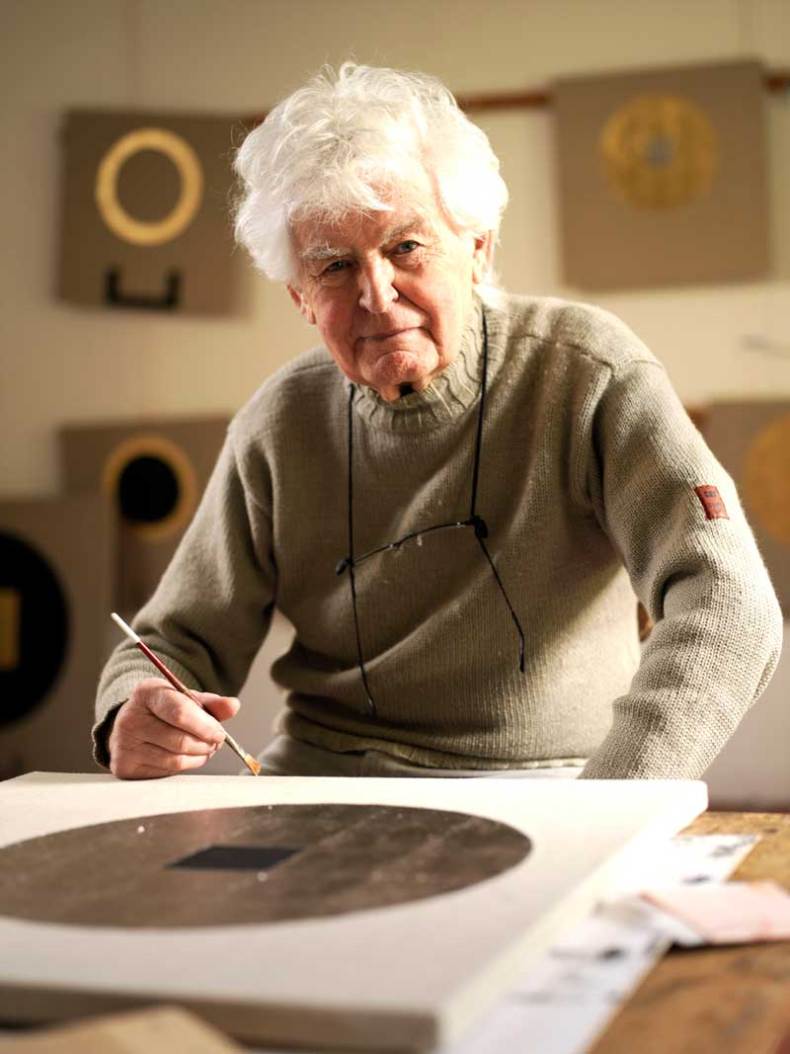In a catalogue essay written to accompany an exhibition of paintings by Patrick Scott held in Dublin’s Douglas Hyde Gallery in May 1981, the artist’s old friend, art critic Dorothy Walker began by referring to his ‘exquisite aesthetic sensibility.’ Then an undergraduate at Trinity College Dublin and a board member of the gallery, I met Pat Scott at this time and can testify to the truth of Dorothy’s description, reflected not just in his work but in the way he ordered his entire life. Everything about him had an enviable exactness and order, and so it seems only right that he should have died, at the age of 93, on the eve of the launch of a large retrospective at the Irish Museum of Modern Art.

Moving Device (1963), Patrick Scott. Private collection
Scott was born in County Cork in 1921 into an old Anglo-Irish family of what in Ireland are known as ‘strong farmers,’ not quite gentry but certainly more prosperous and productive than neighbouring tenant small-holders. His birth coincided with the onset of profound changes for the country as it embarked on a struggle for independent statehood and an end to the world of which his family had once been a part. Yet there was nothing in Pat’s character or output to suggest he mourned the disappearance of the old order.
On the contrary, from the beginning of his career he embraced the new and encouraged the avant-garde, albeit in the same neat manner he did everything. His earliest paintings were seen from 1941 onwards in exhibitions organised by the White Stag Group, a loose collective of artists led by two escapees from England and national service during the Second World War. These pictures mostly depict birds in parks or on water in a flat landscape devoid of perspective and set against a dark background.
During this period he studied architecture and went on to work in Ireland’s leading modernist practice run by Michael Scott (no relation). During the 1950s he produced still lifes indebted to William Scott (also no relation) and then at the start of the following decade, when he represented Ireland at the Venice Biennale, more landscapes, often of bogs, which at last found him beginning to discover his own distinct timbre through the use of unprimed canvas into which tempera paint sank.

Meditation Painting 28 (2006), Patrick Scott. Collection Irish Museum of Modern Art, Donation, the artist, 2013
It was in 1964 that Pat produced his first Gold paintings. Using gold (and occasionally silver) leaf and tempera he devised a vocabulary of simple abstract forms on unprimed canvas. As Yvonne Scott (again, no relation) explained in a catalogue essay for a 2002 exhibition at the Hugh Lane Gallery, Dublin, these pictures ‘provided a distinctive form and restrained colour range in contrast to the soft-focus, more colourful works which had preceded. However, conceptually, they represent the culmination of a trend in his work which had always been evident – to interpret the world two-dimensionally.’
Thereafter, for the next 60 years, Pat never wavered and produced an oeuvre which was both ascetic and, thanks to the use of precious metals, opulent. The contrast between austere canvas and sumptuous gold is emphasised by the perfection of technique: as ever Pat was impeccable in his craftsmanship.

Patrick Scott. Photo: Kevin Dunne
He never completely relinquished ventures into bolder colour, devising the original motif for the succession of Rosc exhibitions that introduced contemporary movements in art to Ireland from 1967 onwards and designing gorgeously vibrant tapestries for the Aubusson workshops of Tabard Frères et Soeurs.
Yet ultimately it is the Gold paintings which defined Pat and proved to be his most lasting contribution to Irish art, eloquently and elegantly testifying that it is possible to remain consistent in the face of shifting fashion and yet never become dated.
Patrick Scott, 24 January 1921–14 February 2014.

A Tribute to Patrick Scott
Share
In a catalogue essay written to accompany an exhibition of paintings by Patrick Scott held in Dublin’s Douglas Hyde Gallery in May 1981, the artist’s old friend, art critic Dorothy Walker began by referring to his ‘exquisite aesthetic sensibility.’ Then an undergraduate at Trinity College Dublin and a board member of the gallery, I met Pat Scott at this time and can testify to the truth of Dorothy’s description, reflected not just in his work but in the way he ordered his entire life. Everything about him had an enviable exactness and order, and so it seems only right that he should have died, at the age of 93, on the eve of the launch of a large retrospective at the Irish Museum of Modern Art.
Moving Device (1963), Patrick Scott. Private collection
Scott was born in County Cork in 1921 into an old Anglo-Irish family of what in Ireland are known as ‘strong farmers,’ not quite gentry but certainly more prosperous and productive than neighbouring tenant small-holders. His birth coincided with the onset of profound changes for the country as it embarked on a struggle for independent statehood and an end to the world of which his family had once been a part. Yet there was nothing in Pat’s character or output to suggest he mourned the disappearance of the old order.
On the contrary, from the beginning of his career he embraced the new and encouraged the avant-garde, albeit in the same neat manner he did everything. His earliest paintings were seen from 1941 onwards in exhibitions organised by the White Stag Group, a loose collective of artists led by two escapees from England and national service during the Second World War. These pictures mostly depict birds in parks or on water in a flat landscape devoid of perspective and set against a dark background.
During this period he studied architecture and went on to work in Ireland’s leading modernist practice run by Michael Scott (no relation). During the 1950s he produced still lifes indebted to William Scott (also no relation) and then at the start of the following decade, when he represented Ireland at the Venice Biennale, more landscapes, often of bogs, which at last found him beginning to discover his own distinct timbre through the use of unprimed canvas into which tempera paint sank.
Meditation Painting 28 (2006), Patrick Scott. Collection Irish Museum of Modern Art, Donation, the artist, 2013
It was in 1964 that Pat produced his first Gold paintings. Using gold (and occasionally silver) leaf and tempera he devised a vocabulary of simple abstract forms on unprimed canvas. As Yvonne Scott (again, no relation) explained in a catalogue essay for a 2002 exhibition at the Hugh Lane Gallery, Dublin, these pictures ‘provided a distinctive form and restrained colour range in contrast to the soft-focus, more colourful works which had preceded. However, conceptually, they represent the culmination of a trend in his work which had always been evident – to interpret the world two-dimensionally.’
Thereafter, for the next 60 years, Pat never wavered and produced an oeuvre which was both ascetic and, thanks to the use of precious metals, opulent. The contrast between austere canvas and sumptuous gold is emphasised by the perfection of technique: as ever Pat was impeccable in his craftsmanship.
Patrick Scott. Photo: Kevin Dunne
He never completely relinquished ventures into bolder colour, devising the original motif for the succession of Rosc exhibitions that introduced contemporary movements in art to Ireland from 1967 onwards and designing gorgeously vibrant tapestries for the Aubusson workshops of Tabard Frères et Soeurs.
Yet ultimately it is the Gold paintings which defined Pat and proved to be his most lasting contribution to Irish art, eloquently and elegantly testifying that it is possible to remain consistent in the face of shifting fashion and yet never become dated.
Patrick Scott, 24 January 1921–14 February 2014.
Unlimited access from just $16 every 3 months
Subscribe to get unlimited and exclusive access to the top art stories, interviews and exhibition reviews.
Share
Recommended for you
A Royal Passion: Queen Victoria and Photography
A selection of photographs from the Getty Center’s latest exhibition
Gallery: Photographs at Play
We asked the curator of ‘A Collective Invention’ to select nine photographs from The Morgan’s upcoming show
Ringing with Commendations: Joseph Wright
The Holburne has brought together a superb show that exceeds any limitations of scale or scope